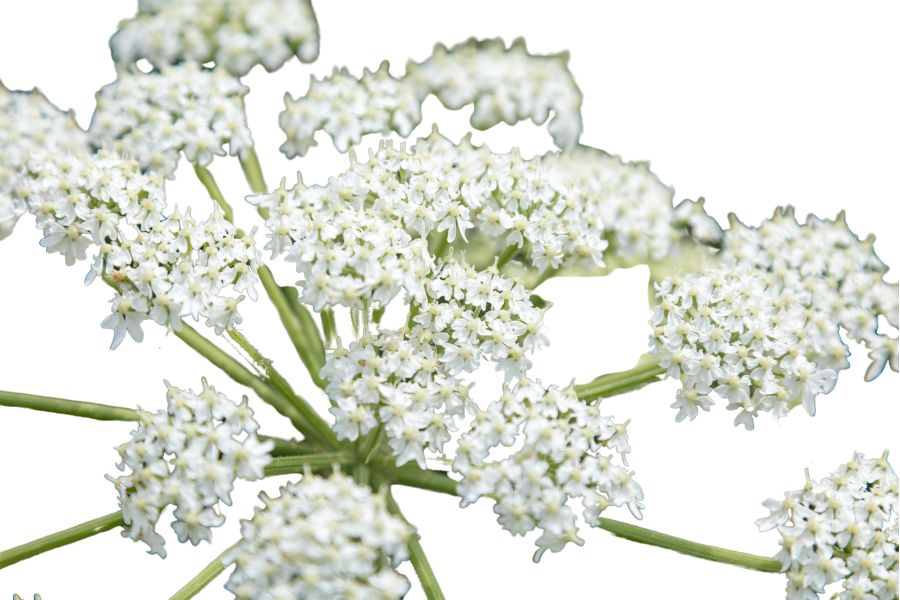Montana is home to more valuable forageable plants than most people realize. Morel mushrooms alone can fetch a high price at markets and grow wild in the right forested parts of the state each spring. Elderberries, serviceberries, and even wild mint can be gathered in the summer if you know where and when to look.
Some of these plants take patience to spot, while others are more common than most people notice. Lamb’s quarters and stinging nettle might look like weeds, but they’re packed with nutrients and flavor. With a little care and timing, they can go from overlooked greens to dinner table staples.
The key is knowing which plants are worth your time and effort. Foraging in Montana isn’t just possible, it can be a source of highly valuable ingredients if you know where to go and what to take. Once you start learning what’s out there, you’ll see how easy it is to come home with a mix of edible treasures.
What We Cover In This Article:
- What Makes Foreageables Valuable
- Foraging Mistakes That Cost You Big Bucks
- The Most Valuable Forageables in the State
- Where to Find Valuable Forageables in the State
- When to Forage for Maximum Value
- The extensive local experience and understanding of our team
- Input from multiple local foragers and foraging groups
- The accessibility of the various locations
- Safety and potential hazards when collecting
- Private and public locations
- A desire to include locations for both experienced foragers and those who are just starting out
Using these weights we think we’ve put together the best list out there for just about any forager to be successful!
A Quick Reminder
Before we get into the specifics about where and how to find these plants and mushrooms, we want to be clear that before ingesting any wild plant or mushroom, it should be identified with 100% certainty as edible by someone qualified and experienced in mushroom and plant identification, such as a professional mycologist or an expert forager. Misidentification can lead to serious illness or death.
All plants and mushrooms have the potential to cause severe adverse reactions in certain individuals, even death. If you are consuming wild foragables, it is crucial to cook them thoroughly and properly and only eat a small portion to test for personal tolerance. Some people may have allergies or sensitivities to specific mushrooms and plants, even if they are considered safe for others.
The information provided in this article is for general informational and educational purposes only. Foraging involves inherent risks.
What Makes Foreageables Valuable
Some wild plants, mushrooms, and natural ingredients can be surprisingly valuable. Whether you’re selling them or using them at home, their worth often comes down to a few key things:
The Scarcer the Plant, the Higher the Demand
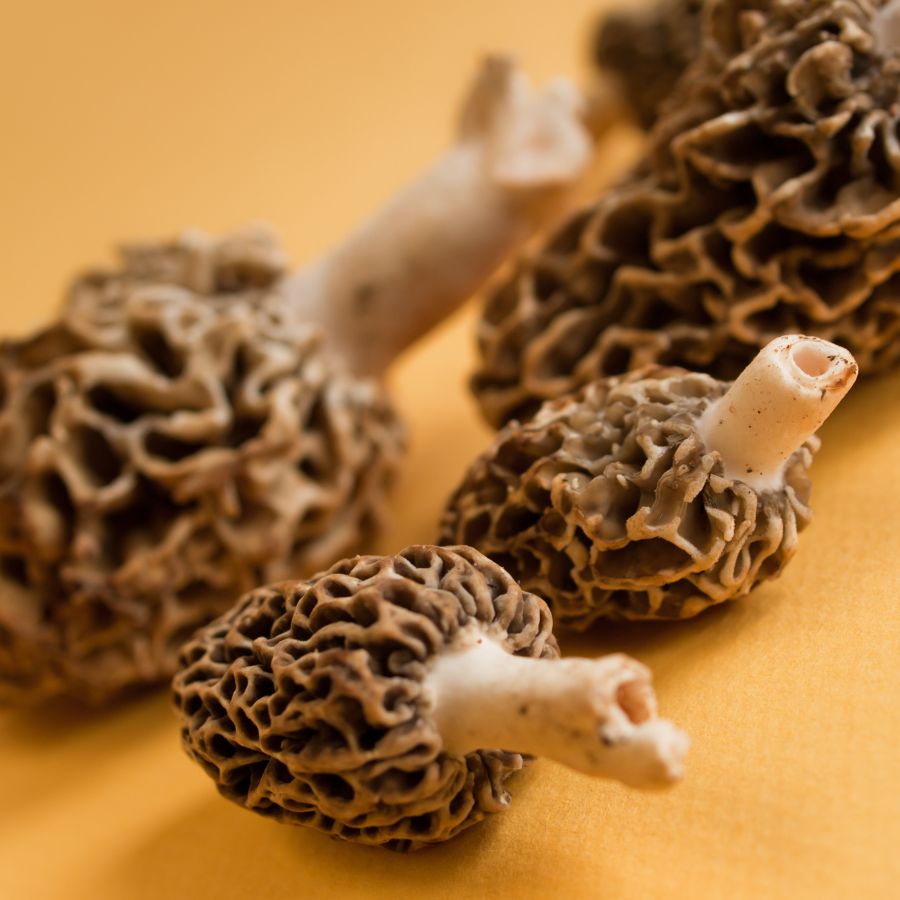
Some valuable forageables only show up for a short time each year, grow in hard-to-reach areas, or are very difficult to cultivate. That kind of rarity makes them harder to find and more expensive to buy.
Morels, truffles, and ramps are all good examples of this. They’re popular, but limited access and short growing seasons mean people are often willing to pay more.
A good seasonal foods guide can help you keep track of when high-value items appear.
High-End Dishes Boost the Value of Ingredients
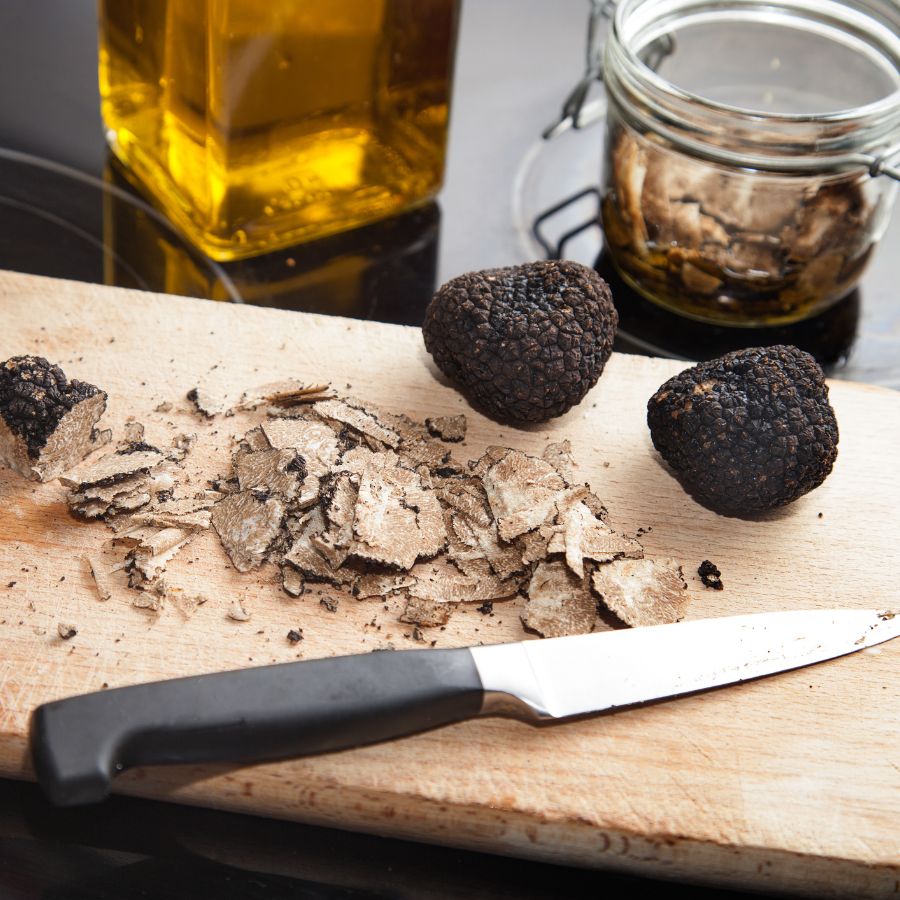
Wild ingredients that are hard to find in stores often catch the attention of chefs and home cooks. When something unique adds flavor or flair to a dish, it quickly becomes more valuable.
Truffles, wild leeks, and edible flowers are prized for how they taste and look on a plate. As more people try to include them in special meals, the demand—and the price—tends to rise.
You’ll find many of these among easy-to-identify wild mushrooms or herbs featured in fine dining.
Medicinal and Practical Uses Drive Forageable Prices Up
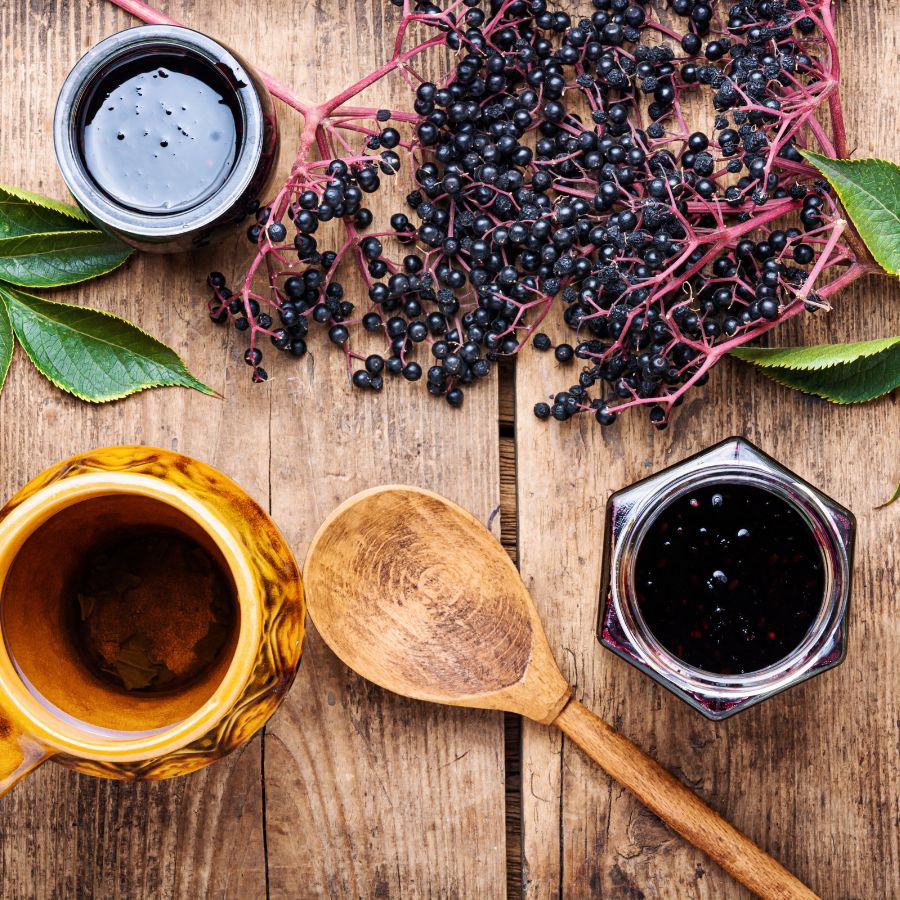
Plants like ginseng, goldenseal, and elderberries are often used in teas, tinctures, and home remedies. Their value comes from how they support wellness and are used repeatedly over time.
These plants are not just ingredients for cooking. Because people turn to them for ongoing use, the demand stays steady and the price stays high.
The More Work It Takes to Harvest, the More It’s Worth
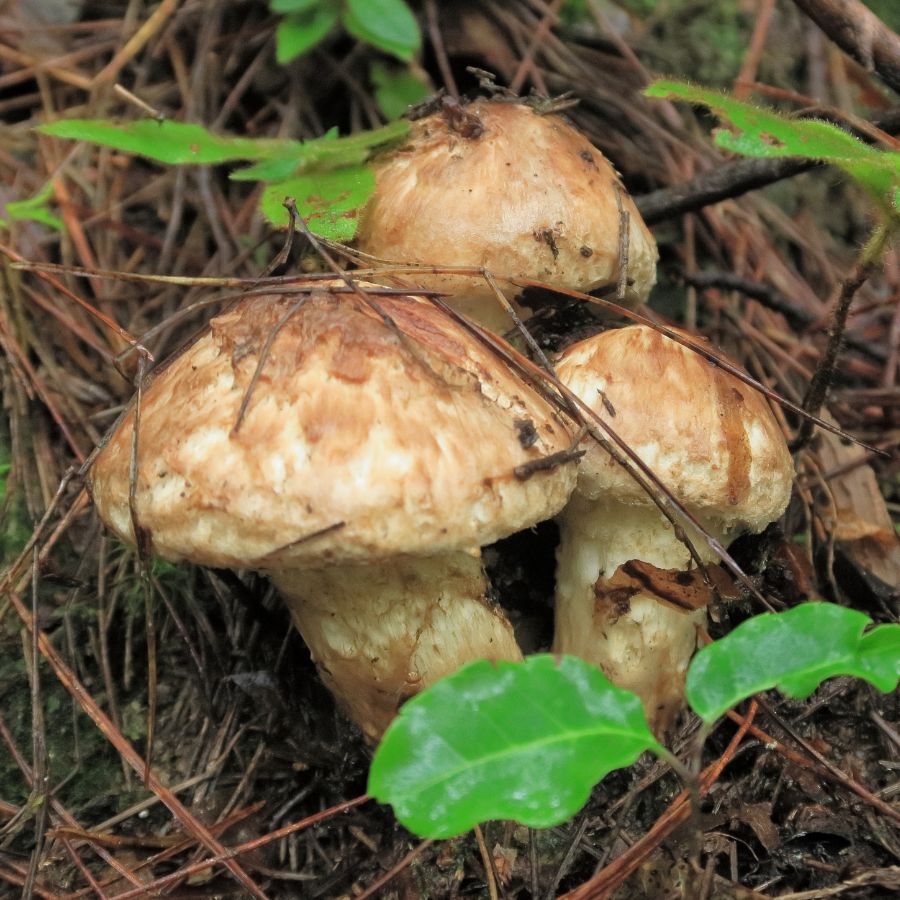
Forageables that are hard to reach or tricky to harvest often end up being more valuable. Some grow in dense forests, need careful digging, or have to be cleaned and prepared before use.
Matsutake mushrooms are a good example, because they grow in specific forest conditions and are hard to spot under layers of leaf litter. Wild ginger and black walnuts, meanwhile, both require extra steps for cleaning and preparation before they can be used or sold.
All of that takes time, effort, and experience. When something takes real work to gather safely, buyers are usually willing to pay more for it.
Foods That Keep Well Are More Valuable to Buyers
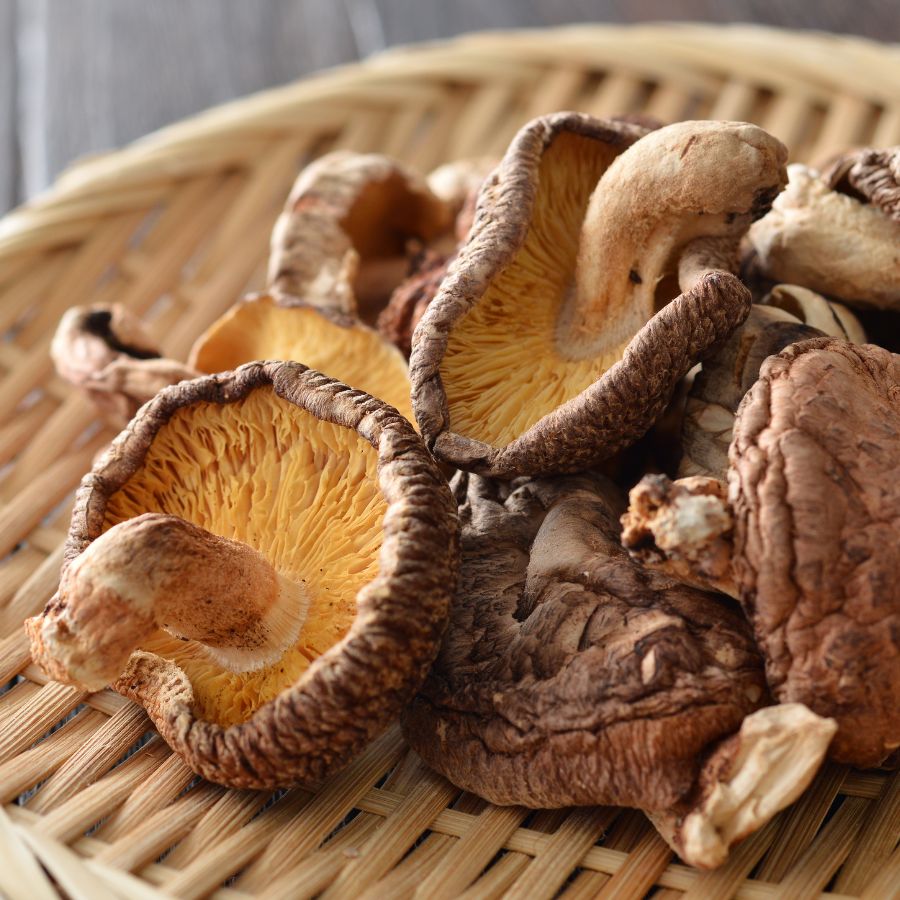
Some forageables, like dried morels or elderberries, can be stored for months without losing their value. These longer-lasting items are easier to sell and often bring in more money over time.
Others, like wild greens or edible flowers, have a short shelf life and need to be used quickly. Many easy-to-identify wild greens and herbs are best when fresh, but can be dried or preserved to extend their usefulness.
A Quick Reminder
Before we get into the specifics about where and how to find these mushrooms, we want to be clear that before ingesting any wild mushroom, it should be identified with 100% certainty as edible by someone qualified and experienced in mushroom identification, such as a professional mycologist or an expert forager. Misidentification of mushrooms can lead to serious illness or death.
All mushrooms have the potential to cause severe adverse reactions in certain individuals, even death. If you are consuming mushrooms, it is crucial to cook them thoroughly and properly and only eat a small portion to test for personal tolerance. Some people may have allergies or sensitivities to specific mushrooms, even if they are considered safe for others.
The information provided in this article is for general informational and educational purposes only. Foraging for wild mushrooms involves inherent risks.
Foraging Mistakes That Cost You Big Bucks
When you’re foraging for high-value plants, mushrooms, or other wild ingredients, every decision matters. Whether you’re selling at a farmers market or stocking your own pantry, simple mistakes can make your harvest less valuable or even completely worthless.
Harvesting at the Wrong Time
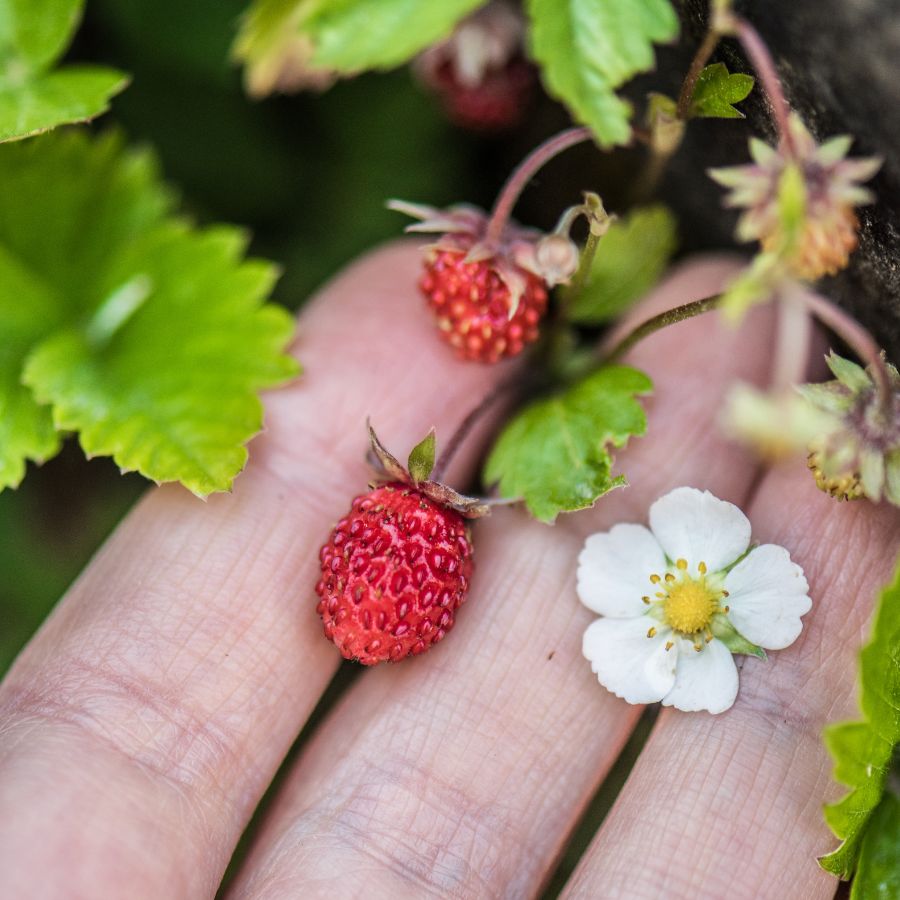
Harvesting at the wrong time can turn a valuable find into something no one wants. Plants and mushrooms have a short window when they’re at their best, and missing it means losing quality.
Morels, for example, shrink and dry out quickly once they mature, which lowers their weight and price. Overripe berries bruise in the basket and spoil fast, making them hard to store or sell.
Improper Handling After Harvest
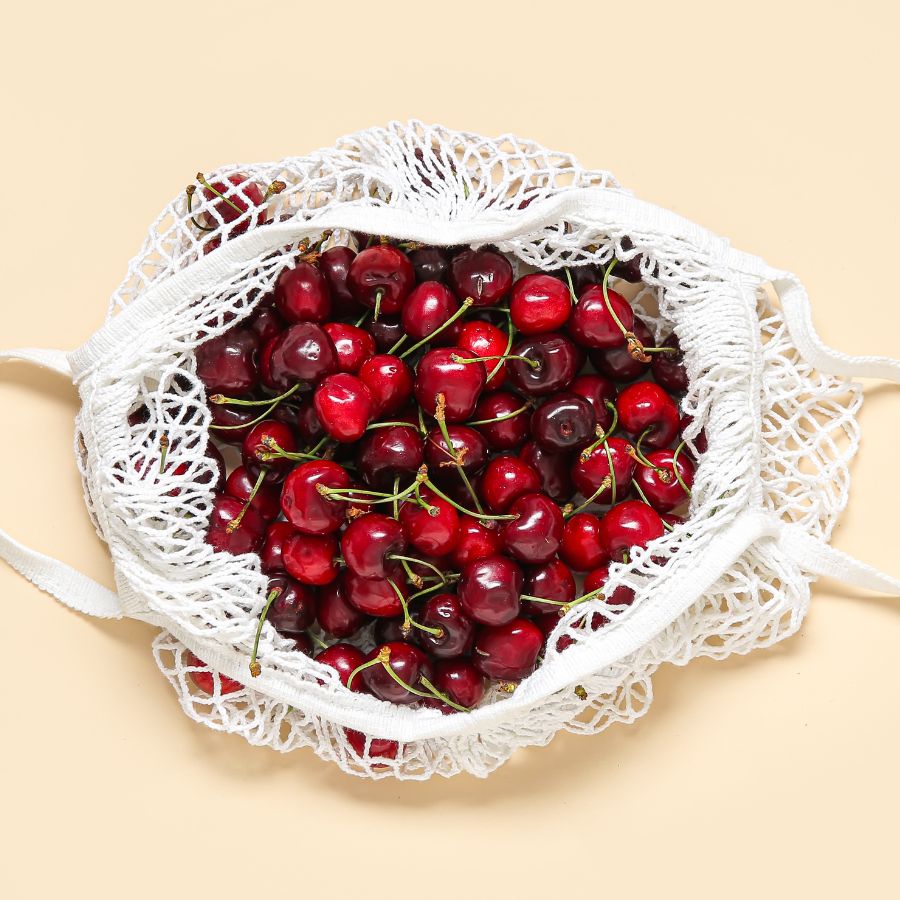
Rough handling can ruin even the most valuable forageables. Crushed mushrooms, wilted greens, and dirty roots lose both their appeal and their price.
Use baskets or mesh bags to keep things from getting smashed and let air circulate. Keeping everything cool and clean helps your harvest stay fresh and look better for longer.
This is especially important for delicate items like wild roots and tubers that need to stay clean and intact.
Skipping Processing Steps
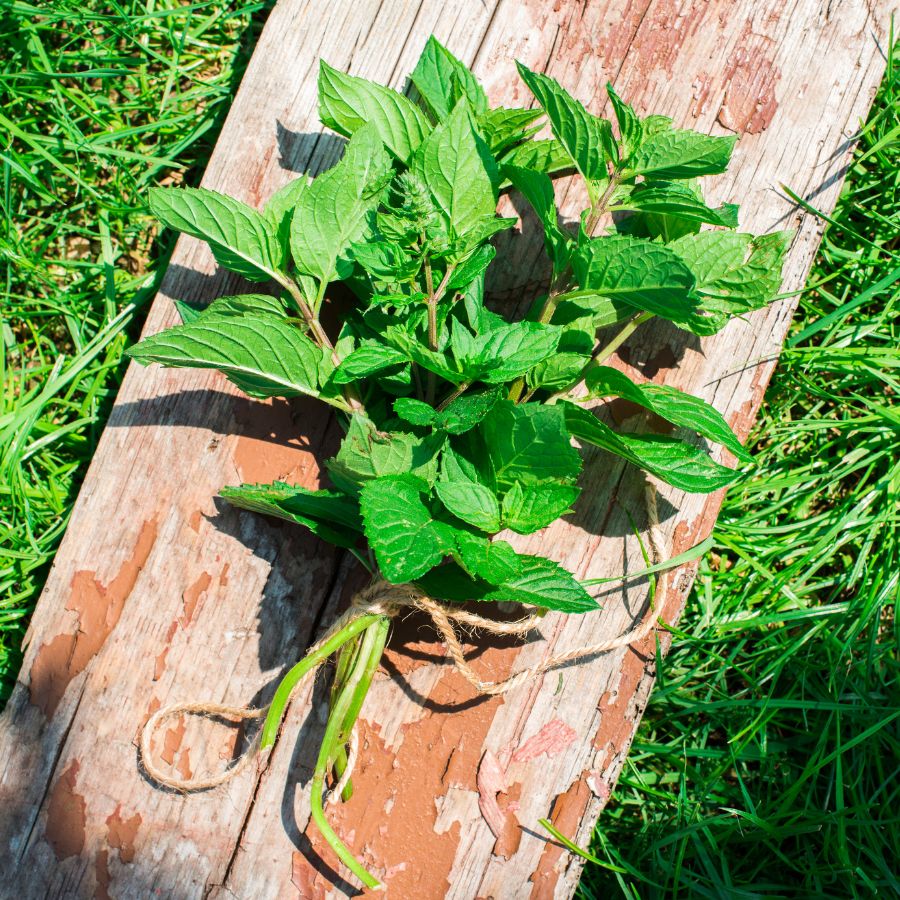
Skipping basic processing steps can cost you money. A raw harvest may look messy, spoil faster, or be harder to use.
For example, chaga is much more valuable when dried and cut properly. Herbs like wild mint or nettle often sell better when bundled neatly or partially dried. If you skip these steps, you may end up with something that looks unappealing or spoils quickly.
Collecting from the Wrong Area
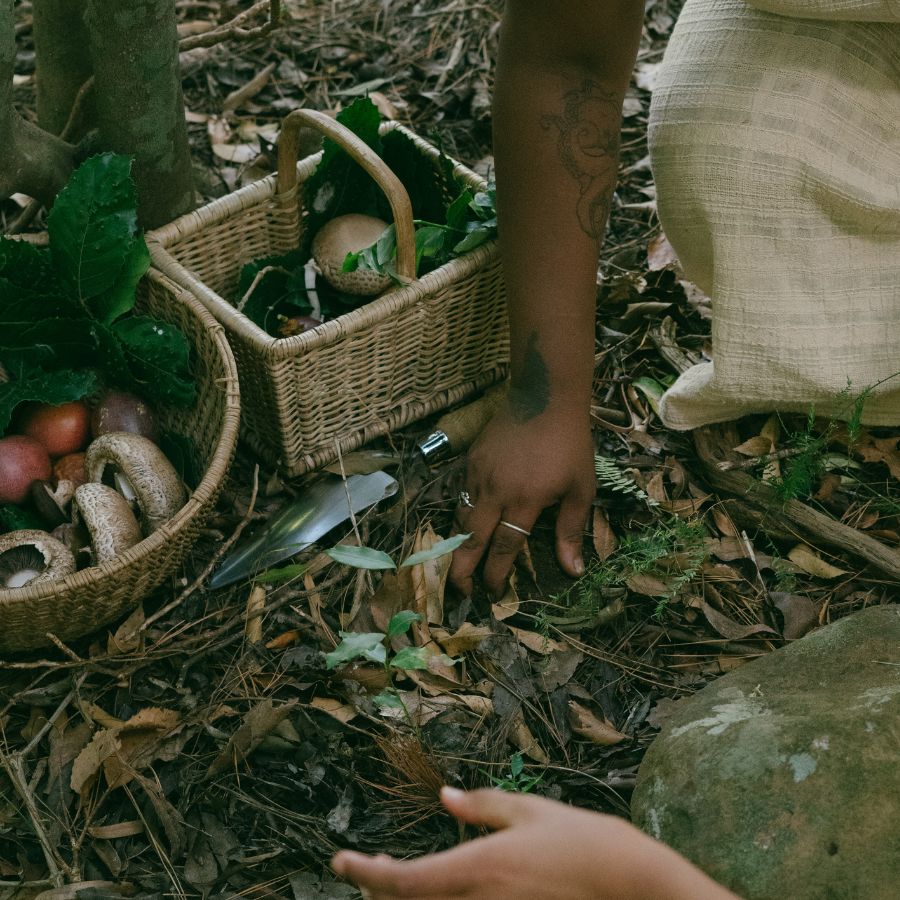
Harvesting in the wrong place can ruin a good find. Plants and mushrooms pulled from roadsides or polluted ground may be unsafe, no matter how fresh they look.
Buyers want to know their food comes from clean, responsible sources. If a spot is known for overharvesting or damage, it can make the whole batch less appealing.
These suburbia foraging tips can help you find overlooked spots that are surprisingly safe and productive.
Not Knowing the Market
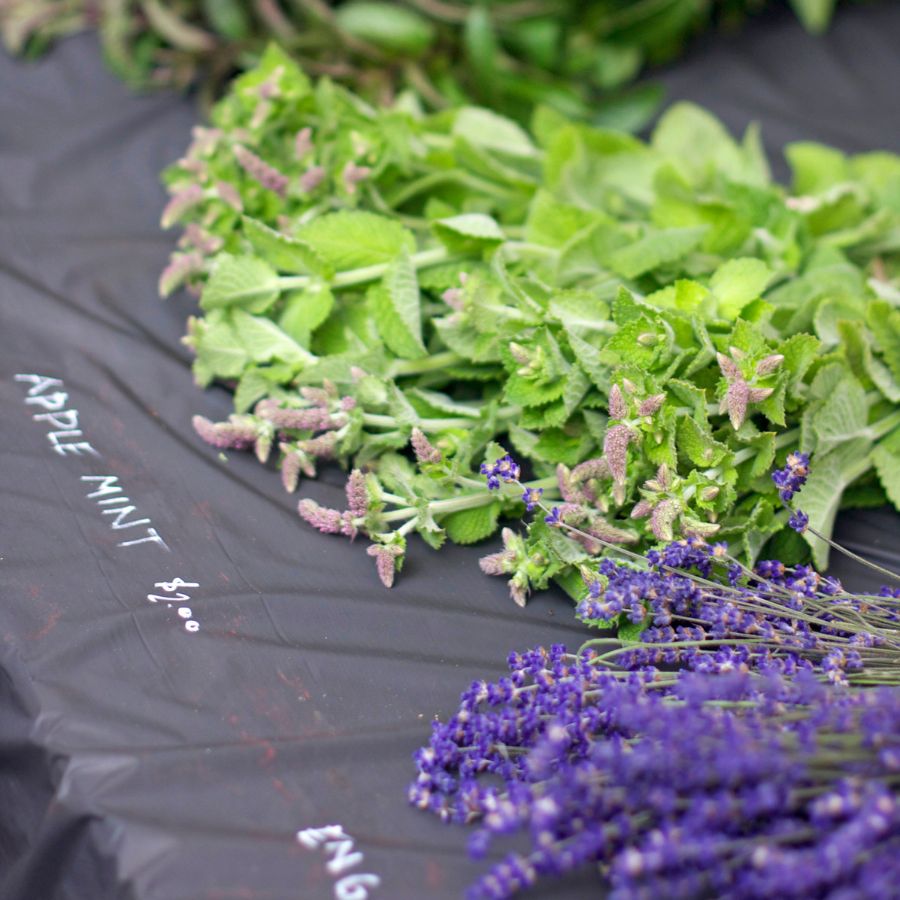
A rare plant isn’t valuable if nobody wants to buy it. If you gather in-demand species like wild ramps or black trumpets, you’re more likely to make a profit. Pay attention to what chefs, herbalists, or vendors are actually looking for.
Foraging with no plan leads to wasted effort and unsold stock. Keeping up with demand helps you bring home a profit instead of a pile of leftovers.
You can also brush up on foraging for survival strategies to identify the most versatile and useful wild foods.
Before you head out
Before embarking on any foraging activities, it is essential to understand and follow local laws and guidelines. Always confirm that you have permission to access any land and obtain permission from landowners if you are foraging on private property. Trespassing or foraging without permission is illegal and disrespectful.
For public lands, familiarize yourself with the foraging regulations, as some areas may restrict or prohibit the collection of mushrooms or other wild foods. These regulations and laws are frequently changing so always verify them before heading out to hunt. What we have listed below may be out of date and inaccurate as a result.
The Most Valuable Forageables in the State
Some of the most sought-after wild plants and fungi here can be surprisingly valuable. Whether you’re foraging for profit or personal use, these are the ones worth paying attention to:
Morel Mushroom (Morchella spp.)
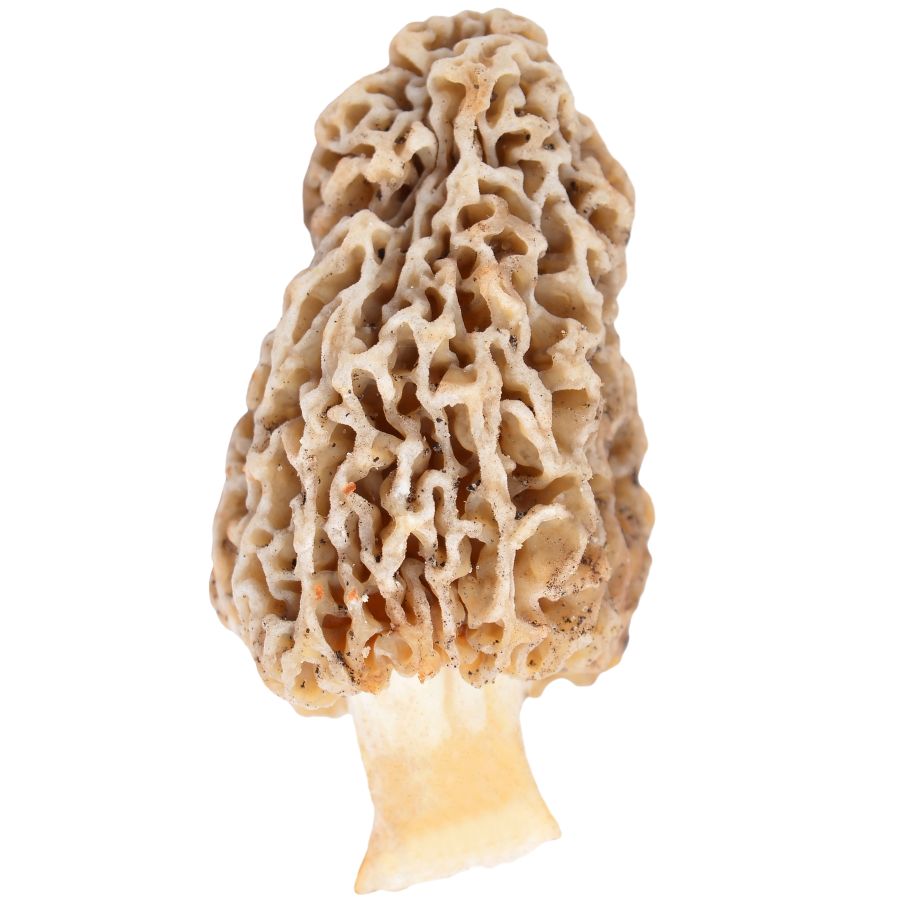
Morel mushrooms have a honeycomb-like surface with deep pits and ridges. The cap is fully attached to the stem, which helps set them apart from dangerous lookalikes like false morels that often have wrinkled, lobed caps and loose or cottony interiors.
The rich, nutty flavor and slightly chewy texture make morels a favorite in high-end kitchens. Many people sauté them in butter, stuff them, or dry them for later use because they hold their flavor extremely well.
Always cook morels thoroughly because raw ones can cause stomach upset, even when they look perfectly normal.
Morels are highly prized by chefs and home cooks, sometimes selling for over $50 per pound fresh and even more when dried.
Part of what makes morels so valuable is how hard they are to cultivate and find. They often grow in specific, unpredictable places, and their short harvesting window drives up both the demand and the price.
Cow Parsnip (Heracleum maximum)

You’ll recognize cow parsnip, also called Indian rhubarb or wild celery, by its tall hollow stems and wide leaves that can grow over a foot across. The flower heads form flat clusters of small white blooms that attract attention in the wild.
The edible parts are the young shoots and flower buds, but only after cooking—raw juice from the plant can cause a severe rash when exposed to sunlight. Peeled stalks have a texture like cooked zucchini and a taste somewhere between parsley and celery.
People sometimes mistake it for giant hogweed, which has a thicker, blotchy stem and more deeply cut leaves. Cow parsnip stems are solid green with fine white hairs, and they don’t have the same toxic compounds at dangerous levels.
Foragers in Alaska and parts of the Pacific Northwest gather it for traditional dishes, and local markets occasionally sell it fresh or pickled. It’s not a high-dollar crop, but its value lies in tradition, flavor, and scarcity in commercial channels.
Chokecherry (Prunus virginiana)

The fruit of chokecherry, also called bitter-berry or Virginia bird cherry, grows in dense clusters and ripens to a deep purple-black color. Its puckering taste is balanced out when cooked into jellies, syrups, or wine.
You can eat the skin and pulp, but the large pit inside contains toxic compounds and should never be consumed raw. Even the leaves and stems can be harmful if ingested.
Chokecherry has a tart, astringent flavor when fresh, but that changes entirely once heat and sugar are added. The texture softens nicely in jams and fruit leather.
The plant’s value comes from both its culinary uses and the fact that it grows abundantly in the wild. While not particularly high-priced, the fruits can still bring a decent return when sold in processed form.
Elderberry (Sambucus nigra ssp. cerulea)
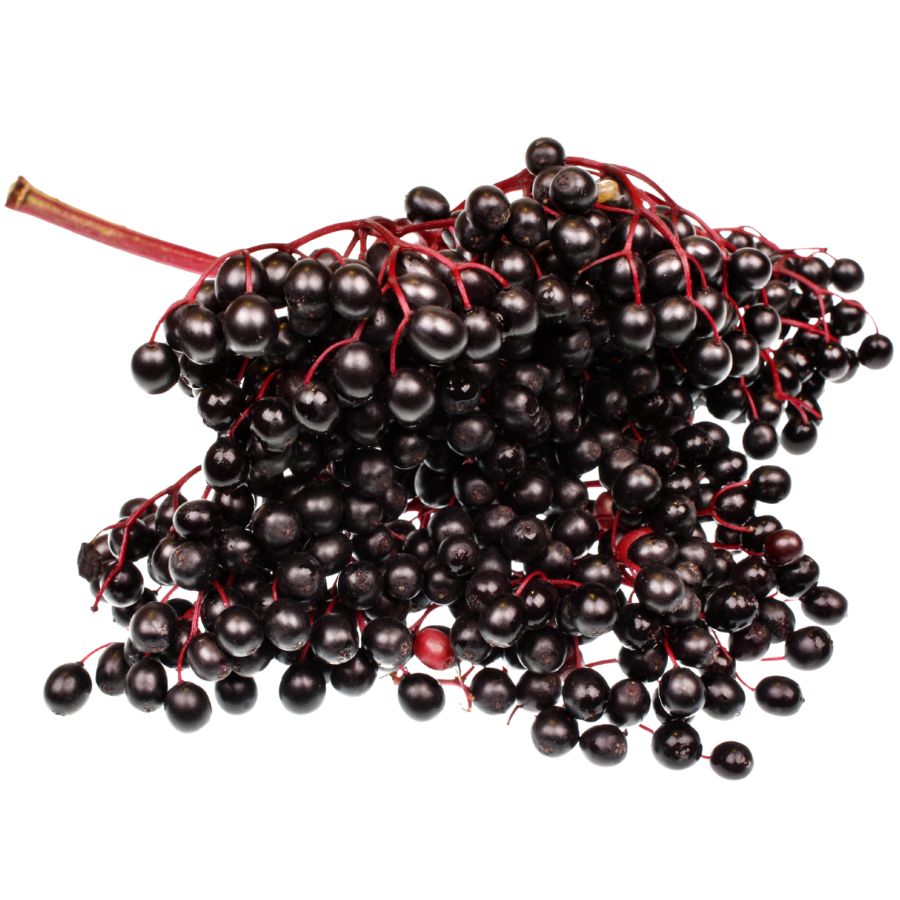
For centuries, elderberries have been gathered not just for food, but for making home remedies prized across the Southwest. Also called Mexican elder and tapiro, elderberry grows as a sprawling bush or small tree with clusters of tiny white flowers that turn into dusty blue-black berries.
There are toxic lookalikes you need to watch for, especially red elderberry, which has round clusters of bright red fruit. Elderberries grow in flatter, broader clusters and have a softer, more powdery appearance when ripe.
The berries have a deep, earthy flavor with a tart edge, and are usually cooked into jams, syrups, and baked goods to bring out their richness.
Make sure to avoid eating the raw berries, seeds, bark, or leaves because they can cause nausea unless they are properly cooked.
This plant stays valuable because the berries are used heavily in teas, tinctures, and syrups that people rely on for wellness, driving steady demand. Elderberries can also be dried and stored for months, making it even more profitable compared to foods that spoil quickly.
Serviceberry (Amelanchier alnifolia)
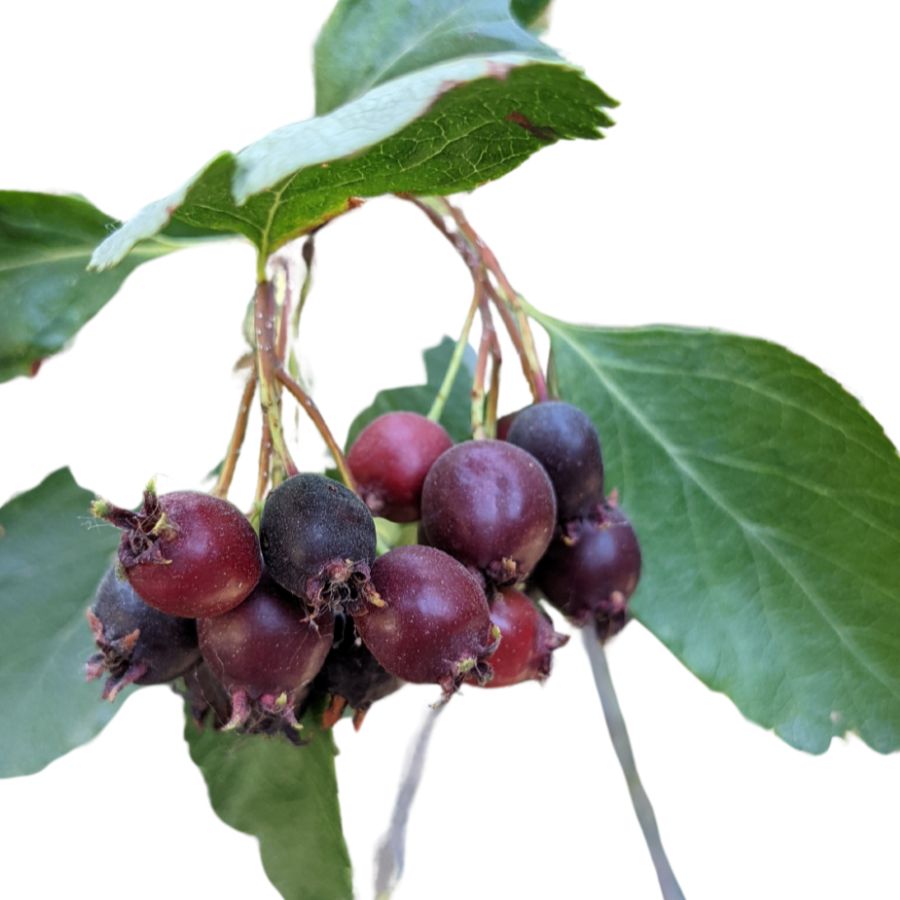
You can spot serviceberry shrubs by their smooth gray bark, clusters of white flowers, and dark blue to purple berries. To avoid confusing them with less safe berries like chokecherries, look for the five-pointed crown at the end of each ripe serviceberry.
These berries taste sweet and slightly nutty, almost like a richer version of a blueberry. Most people dry them, bake them into pastries, or cook them down into rich preserves.
The edible part is the ripe berry, while eating too many seeds raw could cause mild stomach issues because of their natural compounds. When dried or frozen, the berries keep their flavor and quality, making them more valuable for long-term storage and resale.
Serviceberries are a favorite among foragers and chefs because they are packed with flavor and work well in a wide range of recipes. Many buyers are willing to pay well for clean, well-prepared berries that hold up beautifully in baking and cooking.
Wild Strawberry (Fragaria virginiana)
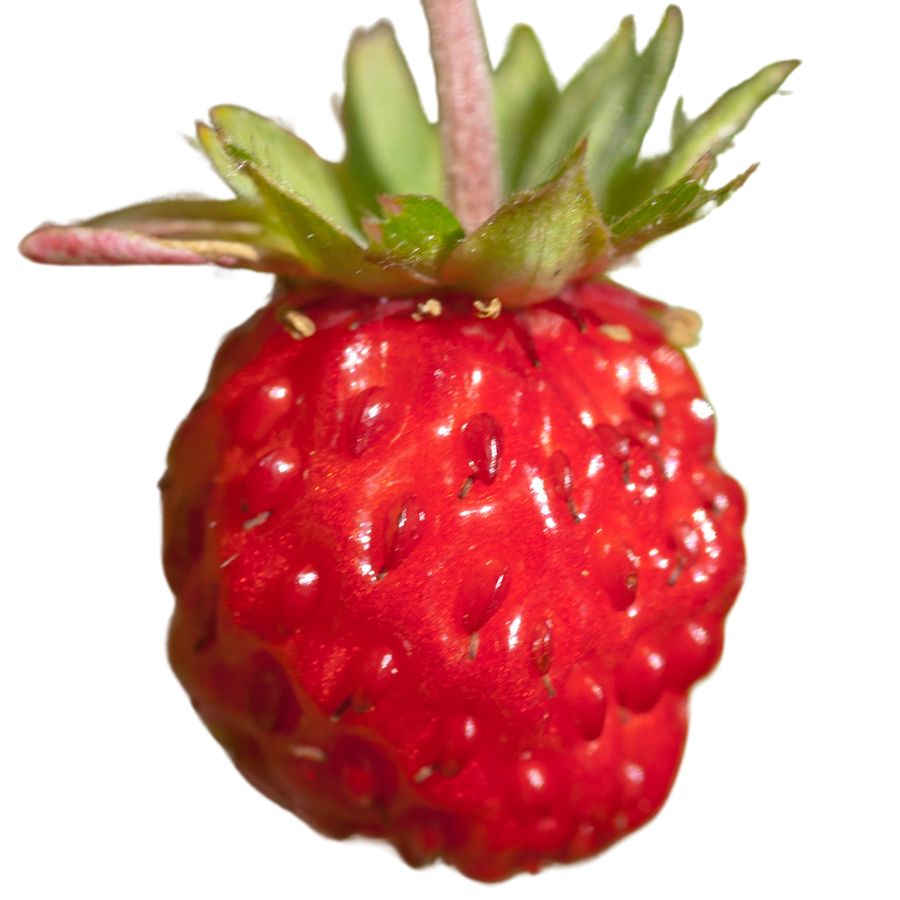
The wild strawberry has five-petaled white flowers and small red fruits that grow close to the ground on thin runners. Its toothed leaves grow in groups of three and are often mistaken for similar-looking plants like mock strawberry, which has yellow flowers and bland, dry fruit.
You can eat the ripe fruit, which has a sweet, concentrated strawberry flavor with a soft, juicy texture. Some people dry or freeze the berries, while others mash them into jam or cook them down into syrup.
The leaves and stems aren’t toxic, but they aren’t typically eaten either. Only the fruit is considered edible and worth harvesting.
Wild strawberries have limited commercial value because they’re small and delicate, but their taste is considered better than many store-bought varieties. That makes them popular in niche markets like gourmet preserves and foraged produce boxes.
Golden Currant (Ribes aureum)
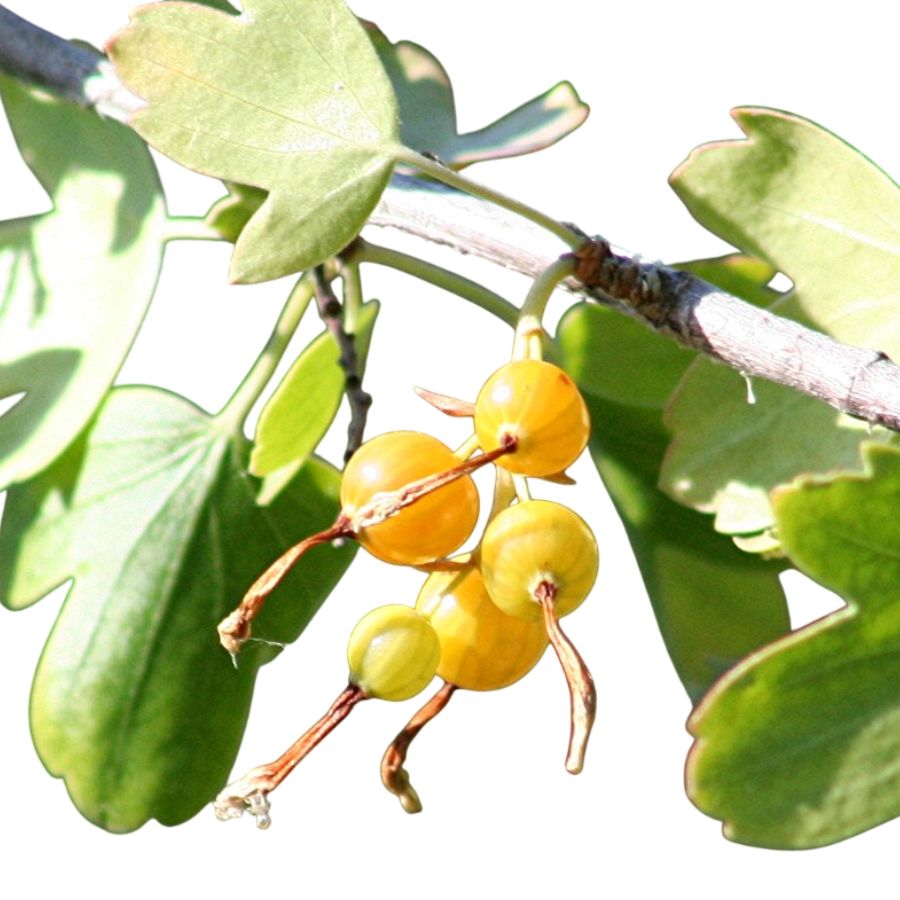
Golden currants grow on shrubs with soft lobed leaves and smooth, thornless branches, producing colorful berries that range from golden yellow to nearly purple. These berries are edible, juicy, and slightly tangy, often used in pies or turned into jam.
Only the berries are eaten, while the stems and leaves are not used for food. You can dry the fruit or freeze it, and the skin softens nicely when simmered into sauces or syrup.
They’re sometimes confused with other currants or wild gooseberries, but golden currants lack thorns and have a less aggressive flavor. If the plant has bristly stems or berries with tiny hairs, it’s probably not golden currant.
Golden currants are valuable in the kitchen for their versatility and unique taste, even though they aren’t commonly sold in stores. Their real worth lies in how many ways you can prepare and store the fruit without losing flavor.
Plains Pricklypear Cactus (Opuntia polyacantha)
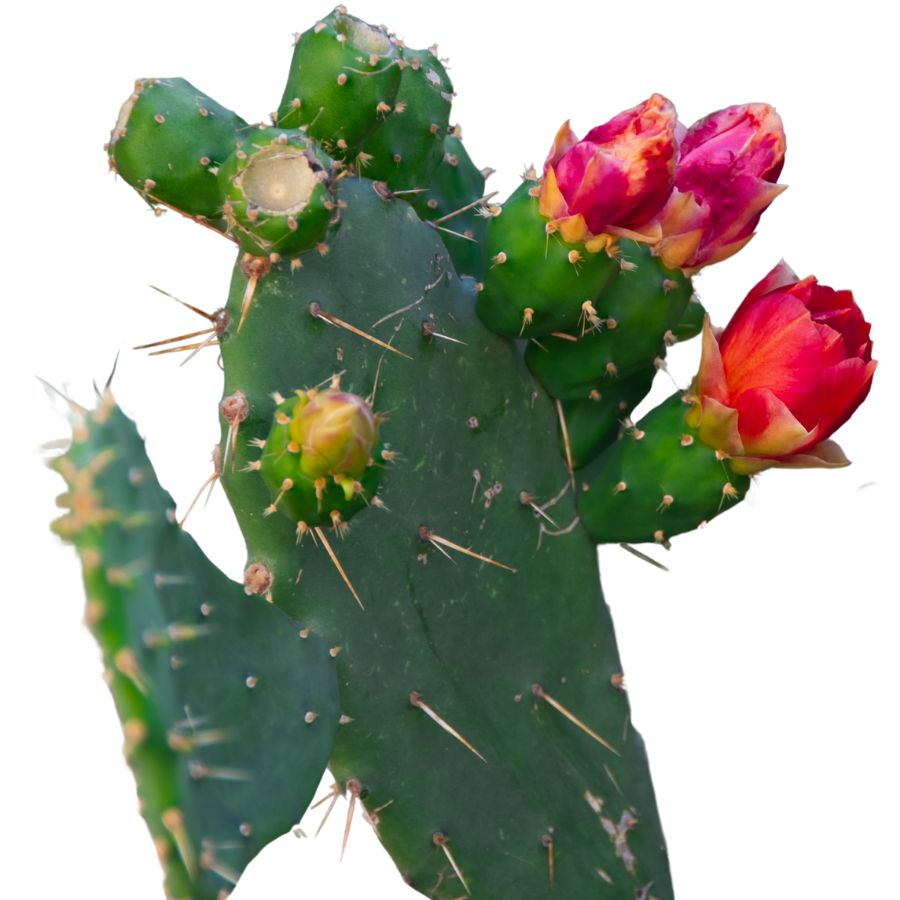
Plains pricklypear cactus has flat green pads that grow in clumps, each one lined with long spines and short barbed hairs that irritate the skin. The pads and fruit are edible if handled and cleaned correctly.
The pads are best sliced and grilled or sautéed, giving them a slightly sour flavor with a texture like cooked okra. The fruit can be eaten fresh or processed into juice, candy, or jelly.
It’s important not to confuse it with non-edible species that grow in similar environments, especially those without fleshy fruit or those with dense clusters of long, dark spines. Always use gloves and tongs to avoid getting glochids in your skin.
Harvested pads, or nopales, are sold fresh or jarred in brine, and the fruit is often sold peeled at local markets. While not extremely expensive, cleaned pricklypear products are in steady demand and can be a valuable addition to a forager’s haul.
Prairie Onion (Allium textile)
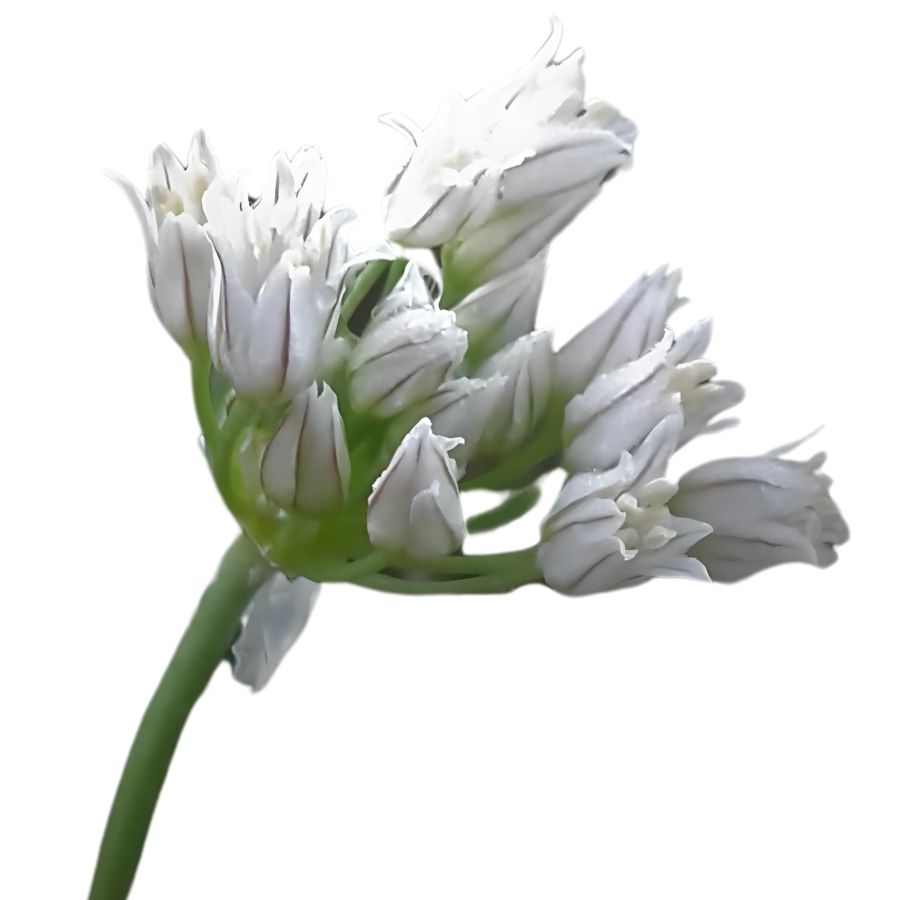
Prairie onion has tall, slender stems topped with clusters of pink to pale purple flowers and narrow, grass-like leaves. You’ll usually notice a strong onion scent when crushing any part of it, which helps confirm its identity.
The bulbs and leaves are edible and have a mild onion flavor, slightly sweet and not as sharp as store-bought varieties. You can chop the greens raw into salads or cook the bulbs in soups or stews.
It has a few lookalikes, like death camas, which lacks the onion smell and has different flower structures, so always double-check before eating. Death camas is toxic, and mistaking it for prairie onion can be dangerous.
Some people dehydrate the leaves or bulbs for storage, but it’s most commonly used fresh for its flavor. It doesn’t have much commercial value, but it’s appreciated by foragers for its taste and versatility.
Stinging Nettle (Urtica dioica)

Stinging nettle, also called burn nettle or common nettle, is a leafy green covered in tiny needle-like hairs that deliver a sting. These hairs can irritate your skin, but cooking the plant completely removes that problem.
Only the top few inches of the plant are harvested for food, usually while the stems are still tender. After boiling or steaming, the leaves taste mildly herbal and have a texture similar to cooked kale.
It’s easy to confuse stinging nettle with lookalikes like wood nettle or false nettle, but the key difference is how aggressively stinging nettle reacts when touched. If you brush against it and feel a sharp tingling burn, it’s the real thing.
Fresh nettles are sold at some farmers markets and herb shops, though their value mostly comes from their nutritional punch and culinary versatility. They’re often used in soups, pestos, and green purées where other leafy greens might wilt too quickly.
Lamb’s Quarters (Chenopodium album)
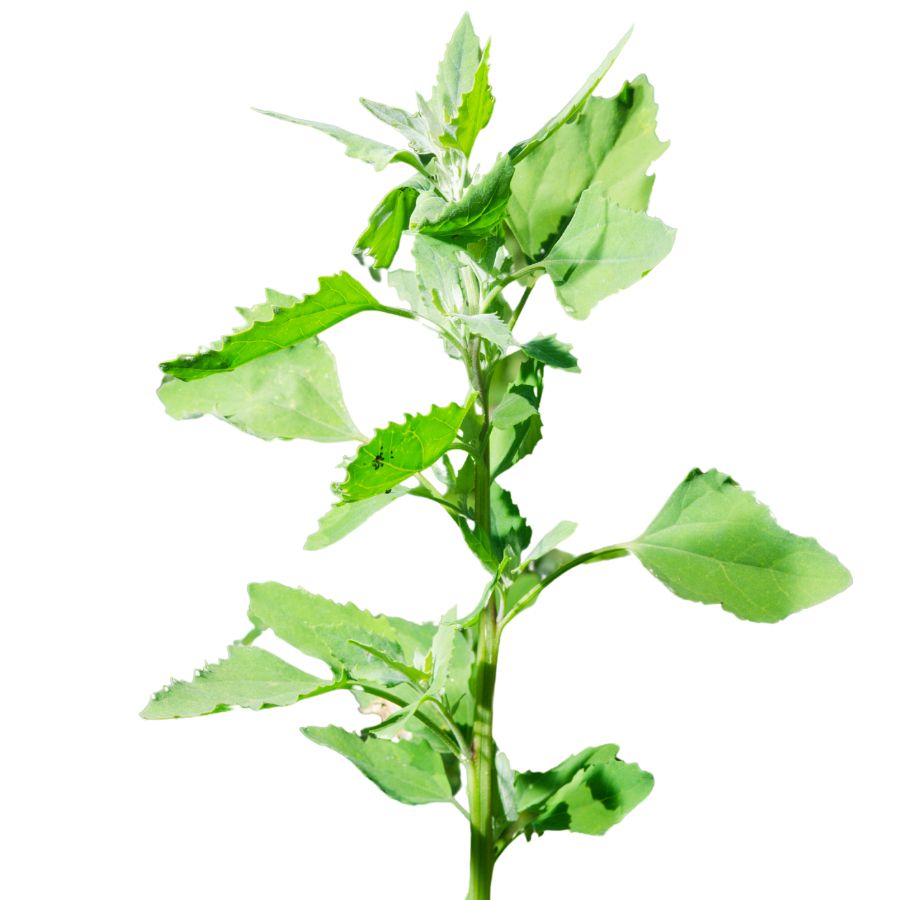
Lamb’s quarters has soft, gray-green leaves that are shaped like goose feet and often carry a light powdery coating. You can eat the young leaves and tender shoots raw or cooked, but the seeds are also edible if prepared properly.
The leaves have a mild, spinach-like flavor and are often sautéed or tossed into soups and stews. While the plant is nutritious, with high levels of vitamins A and C, it also contains oxalates, so it’s best not to overdo it.
Some of the lookalikes include epazote and young pigweed, but lamb’s quarters usually has a whitish bloom on the underside of its leaves. It grows in disturbed soils and gardens, often right alongside crops.
Its seeds have been used as a grain and are rich in protein, though collecting them is time-consuming. The plant itself isn’t sold at high prices, but it’s valuable as a free, nutrient-dense green.
Yarrow (Achillea millefolium)
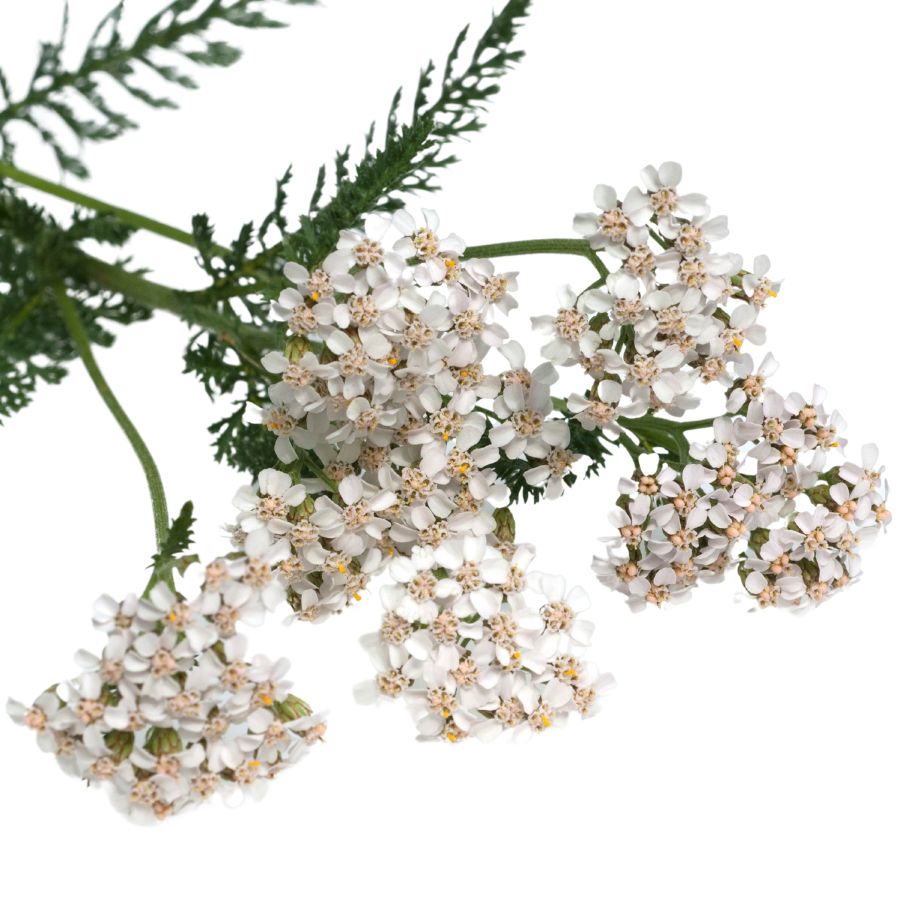
Yarrow, also called soldier’s woundwort and thousand-leaf, grows in flat-topped clusters of tiny white flowers and has finely divided, feathery leaves that smell slightly sweet when crushed. You can eat the leaves and flowers raw or cooked, though the flavor is strong and bitter, almost like tarragon crossed with sage.
Some people dry yarrow and crumble the leaves into soups or tea, but use it in small amounts because it can be overwhelming. Avoid using the stems, which are tough and fibrous even when young.
There are a few lookalikes like wild carrot and poison hemlock, which also have white flowers, but yarrow’s leaves are more delicate and fernlike, and the plant has no purple blotches on its stem. Hemlock also lacks yarrow’s distinct scent and grows taller and glossier.
While yarrow isn’t particularly valuable in commercial markets, it’s useful in small-scale herbal or gourmet food circles and sells modestly as a dried culinary herb. The bitterness adds a unique touch in certain recipes, especially in infused oils or steeped drinks.
Curly Dock (Rumex crispus)
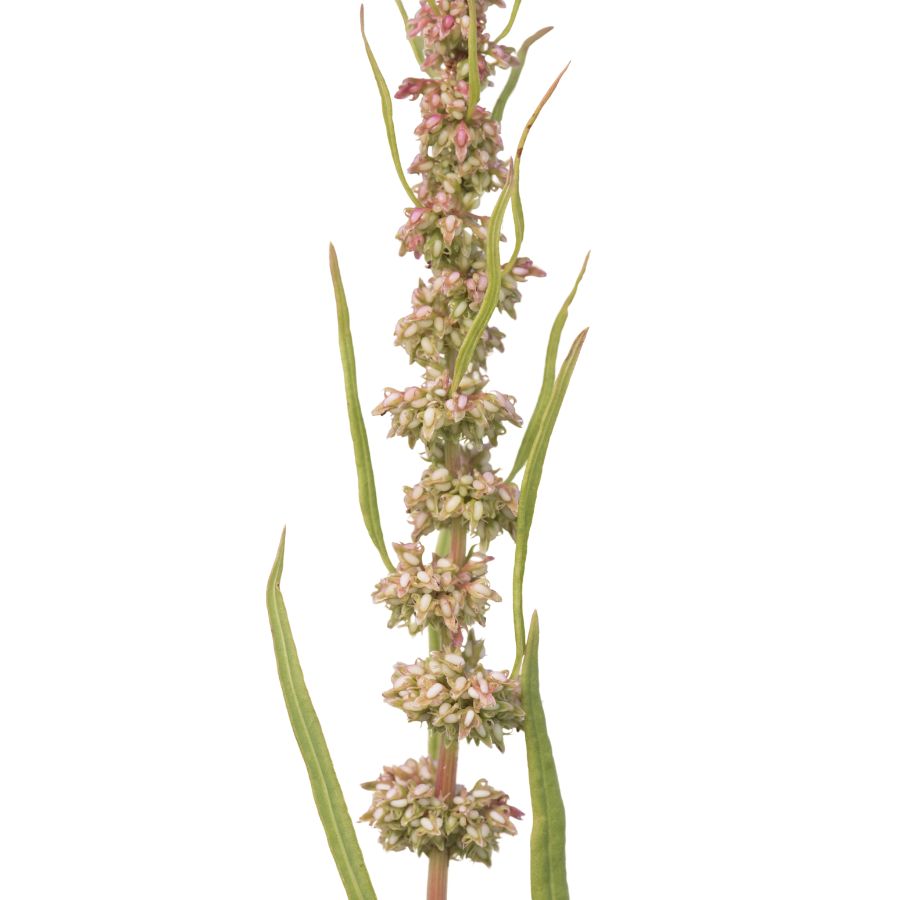
Curly dock grows in a tall, upright cluster with narrow, wavy-edged leaves and a deep taproot. You’ll often see the older seed stalks turn a rusty brown and remain standing even after the leaves die back.
The leaves are edible when young, with a tart, lemony flavor and a slightly chewy texture once cooked. Most people boil them in a few changes of water or sauté them like spinach.
You can also harvest the seeds, which look like small, papery brown hulls along the dried stalks. They’re edible too, but gritty and often ground into flour to mix with other grains.
Some dock species aren’t as palatable or safe, especially ones with broader leaves or harsh, acrid sap. Curly dock is generally safe in moderation, but it does contain oxalates, so it’s not a good idea to eat it in large quantities every day.
Common Evening Primrose (Oenothera biennis)
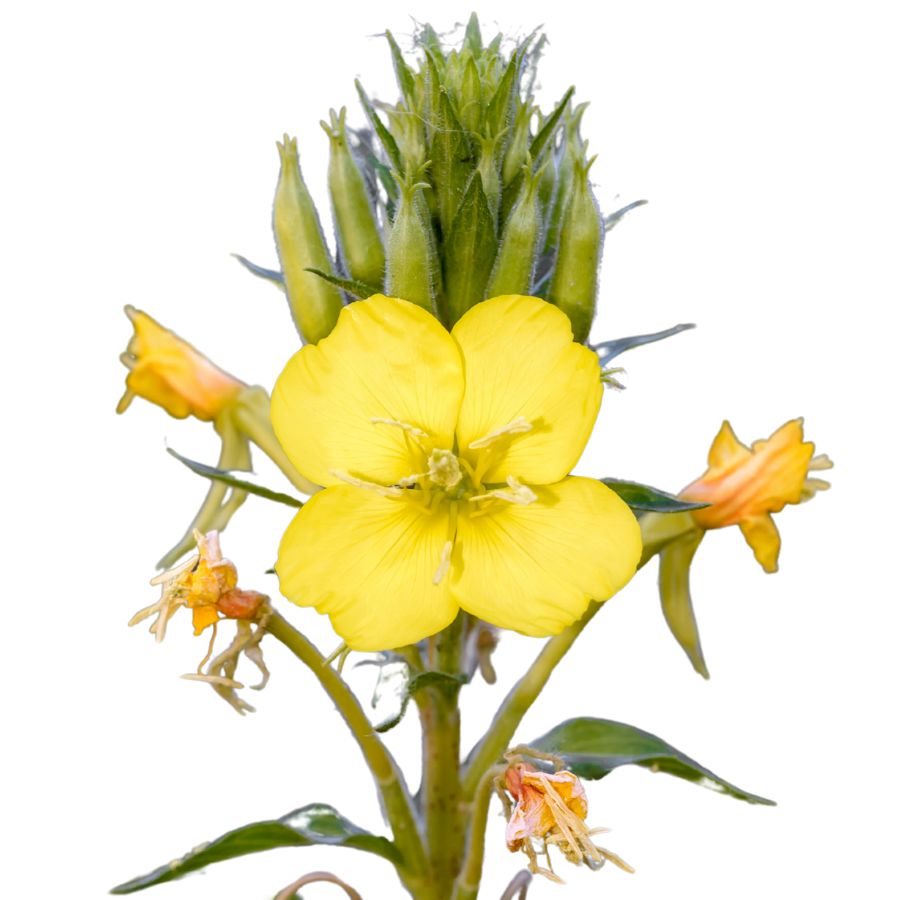
Evening primrose has yellow flowers shaped like open cups, long rough stems, and alternating leaves that taper at both ends. The entire plant has edible parts, but the taproot is what most people go for.
Raw roots are crisp and peppery, while cooking brings out a sweet earthiness similar to salsify. You can also eat the young leaves or sprinkle petals over salads, though they don’t have much flavor.
People sometimes mistake it for hairy mullein or even yellow salsify, but those have very different textures and flower shapes. Evening primrose petals are smooth and arranged evenly in a flat circle, which helps separate it from lookalikes.
It isn’t a high-dollar wild edible, but it offers a lot of food from one plant, making it valuable for foragers. The seeds have a mild nutty flavor and are sometimes ground or sprinkled onto dishes for texture.
Watercress (Nasturtium officinale)
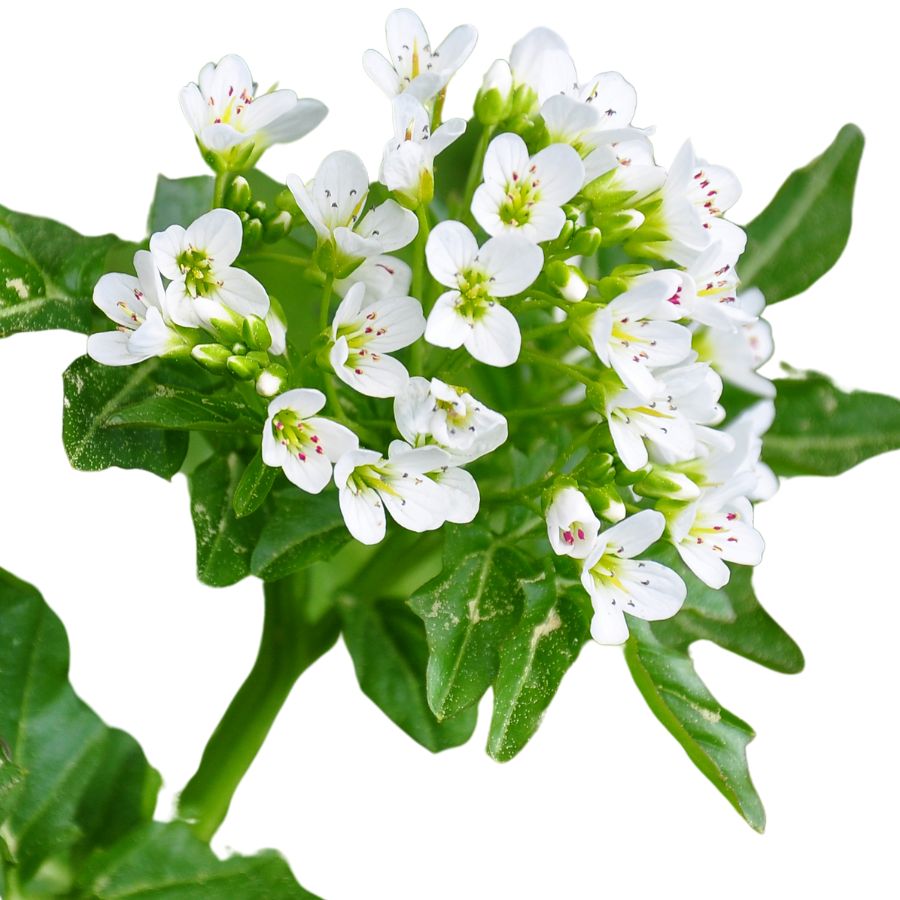
You’ll find watercress in slow-moving creeks and see it trailing along the water’s surface with clusters of tiny white blossoms. The leaves are edible and deliver a clean, peppery taste that works well fresh or tossed into stir-fries.
It’s important to watch out for lookalikes like fool’s watercress, which lacks the spicy bite and can be toxic. True watercress has a distinctive aroma and a watery, hollow stem that snaps easily.
People usually eat the leaves and stems, while the roots stay in the streambed. Watercress is packed with nutrients and adds a pleasant kick to meals without overpowering them.
Watercress is considered a premium leafy green and doesn’t keep long after harvesting, which drives up its market price. It’s not uncommon to see it featured in gourmet dishes or sold in farmers markets by the bunch.
Wild Mint (Mentha arvensis)

The flavor of wild mint is cool, clean, and slightly peppery, especially when the leaves are freshly crushed. Most people use the leaves, but the young stems are edible too when finely chopped.
Wild mint grows low to the ground and produces small, pale purple flowers along the stem. Its most common lookalike is American pennyroyal, which has a similar shape but a much harsher, almost medicinal smell and is toxic in large amounts.
You can dry the leaves for tea or candy them for baking projects, but they’re also good tossed into salads straight from the field. The texture is soft, almost velvety, with a satisfying chew when fresh.
It doesn’t sell for much in bulk, but its value lies in how much use you can get from a small batch. If you’re preserving herbs for your own pantry, it’s one of the best native mints to have on hand.
Oregon Grape (Mahonia repens)
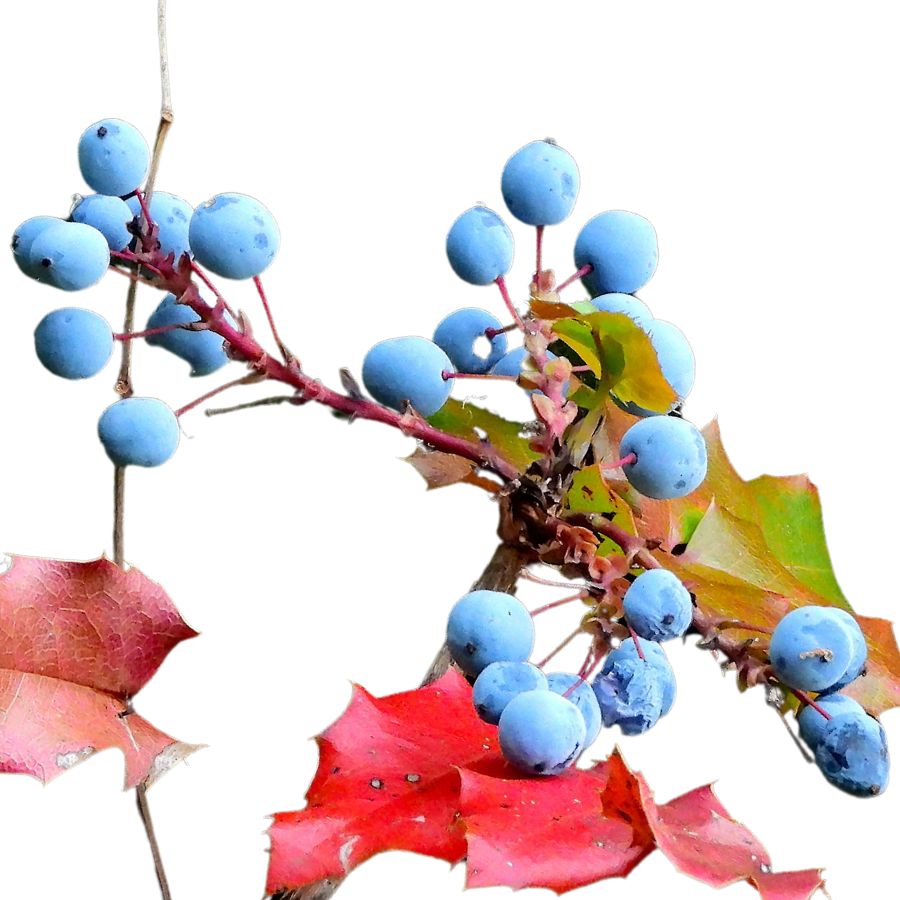
You’ll recognize Oregon grape by its leathery, holly-like leaves and dense clusters of purple-blue berries. The fruit is edible but intensely sour, with a gritty texture from the seeds.
The berries can be cooked down into syrups, pie filling, or jelly, and they blend well with sweeter fruits like apple or peach. They’re not eaten raw very often, but heat and sugar bring out the best in them.
Don’t confuse Oregon grape with plants like Virginia creeper or pokeweed, which also produce dark berries but lack the tough spiny leaves. The berries of those lookalikes are toxic and not safe to eat in any form.
Oregon grape doesn’t bring in much money commercially, but it’s prized by home foragers and small-scale producers for how well it preserves. The roots aren’t edible, but they’re sometimes processed separately for their bitter compounds.
American Licorice (Glycyrrhiza lepidota)
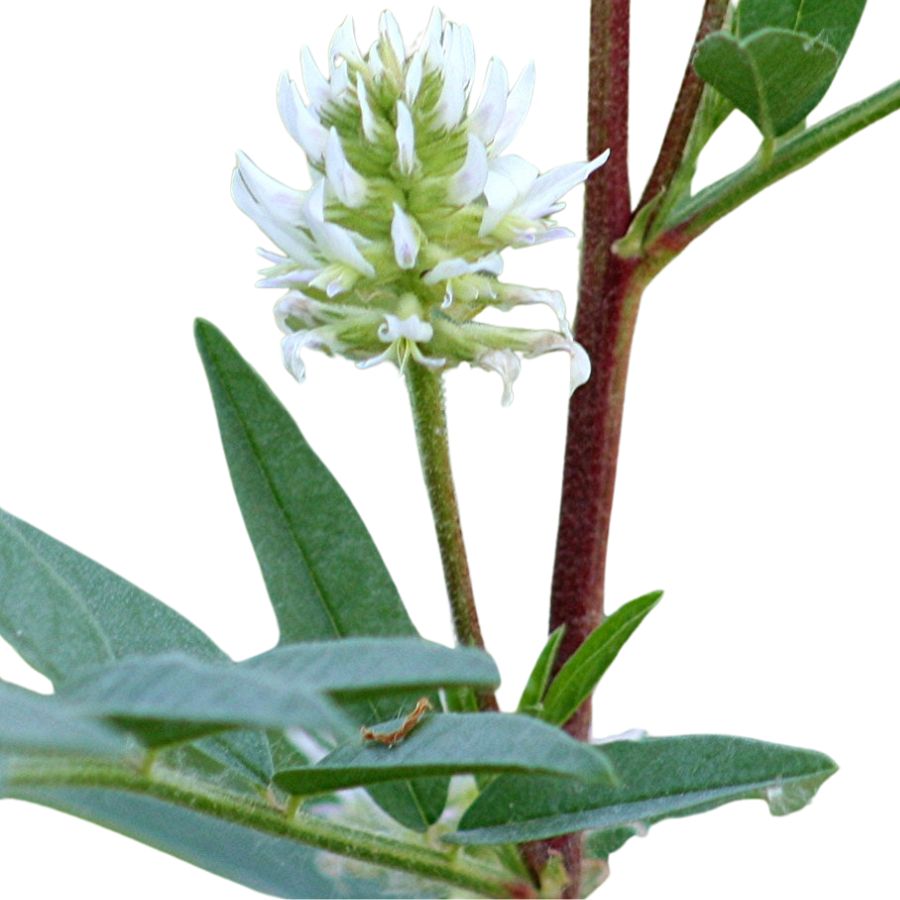
American licorice has long, narrow leaflets arranged on opposite sides of the stem, and it grows in bushy clumps with small, pea-like flowers. The roots are edible and naturally sweet, often chewed fresh or dried for later use.
The taste is earthy with a gentle licorice flavor, not as strong as commercial licorice candy but still pleasant. The texture is firm and woody when dry but softens when soaked or simmered in hot water.
It’s sometimes mistaken for other wild legumes, though most of those lack the sweet-tasting root. The scent of a freshly cut root is one of the easiest ways to tell you have American licorice.
Only the root is used for food—the aboveground parts don’t have culinary value and are best left alone. Herbalists and wildcrafters often collect the root for teas and tinctures, and it can be sold at a decent price if processed and packaged well.
Black Walnut (Juglans nigra)
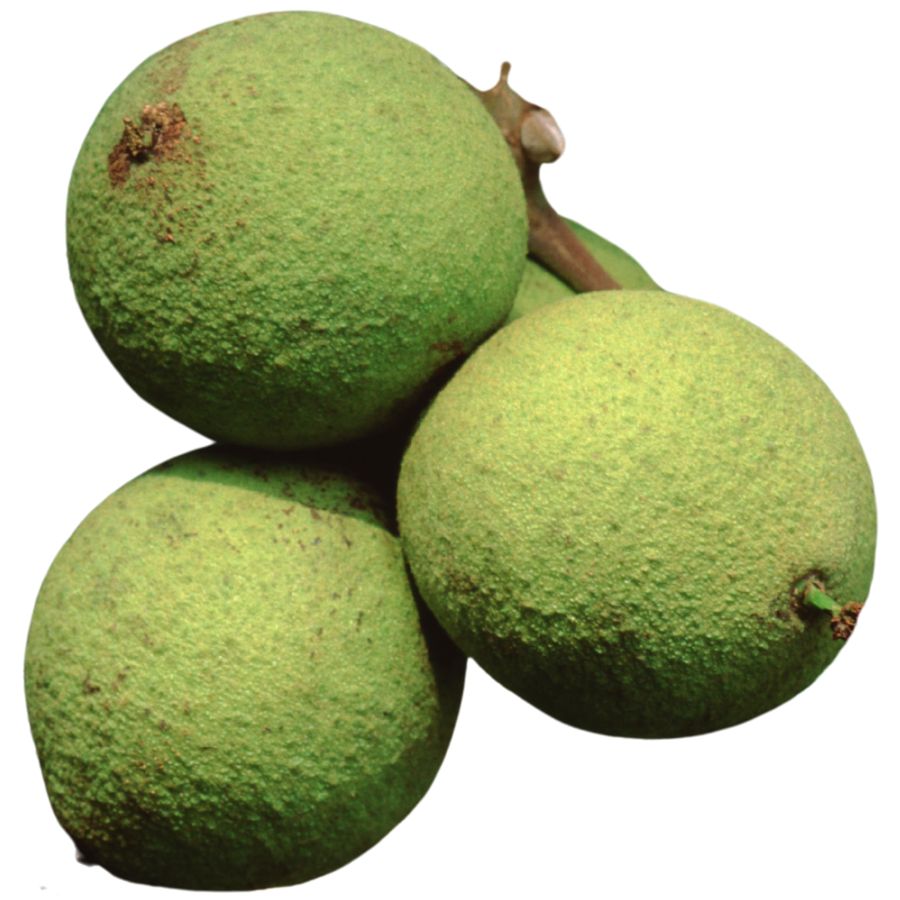
Black walnut grows a nut that’s prized for its strong, musky flavor and crunchy texture. The inner shell is extremely hard and often needs to be cracked with a vise or hammer to reach the oily, wrinkled seed inside.
Its nuts are most often roasted, chopped into desserts, or used in meat rubs and dressings. They’re also one of the few foraged tree nuts that can be stored long-term with very little processing.
The outer green husks leave a dark stain when bruised or broken open, and the nut itself is hidden inside a thick shell. While the fruit of the tree may resemble buckeye at first glance, black walnut leaves have a different shape and pattern, and buckeye seeds are toxic.
Prices stay high because harvesting takes time and experience, and the trees don’t lend themselves easily to large-scale production. Foragers and specialty food makers often pay a premium for wild black walnuts with intense flavor.
Where to Find Valuable Forageables in the State
Some parts of the state are better than others when it comes to finding valuable wild plants and mushrooms. Here are the different places where you’re most likely to have luck:
| Plant | Locations |
| Morel Mushroom (Morchella spp.) | – Lolo National Forest – Gallatin National Forest – Bitterroot National Forest |
| Cow Parsnip (Heracleum maximum) | – Glacier National Park (non-restricted trailside areas) – Helena National Forest – Lewis and Clark National Forest |
| Chokecherry (Prunus virginiana) | – Makoshika State Park – Charles M. Russell National Wildlife Refuge – Missouri Headwaters State Park |
| Elderberry (Sambucus nigra ssp. cerulea) | – Kootenai National Forest – Rattlesnake National Recreation Area – Beaverhead-Deerlodge National Forest |
| Serviceberry (Amelanchier alnifolia) | – Elkhorn Mountains – Absaroka-Beartooth Wilderness – Tobacco Root Mountains |
| Wild Strawberry (Fragaria virginiana) | – Flathead National Forest – Thompson Chain of Lakes State Park – Swan River State Forest |
| Golden Currant (Ribes aureum) | – Medicine Rocks State Park – Pryor Mountains – Upper Missouri River Breaks National Monument |
| Plains Pricklypear Cactus (Opuntia polyacantha) | – Makoshika State Park – Billings Rimrocks – Pictograph Cave State Park |
| Prairie Onion (Allium textile) | – Bighorn Canyon National Recreation Area – Judith Mountains – Sweet Grass Hills |
| Stinging Nettle (Urtica dioica) | – Lee Metcalf National Wildlife Refuge – Pattee Canyon Recreation Area – Giant Springs State Park |
| Lamb’s Quarters (Chenopodium album) | – Bannack State Park – Missouri Headwaters State Park – Giant Springs State Park |
| Yarrow (Achillea millefolium) | – Glacier National Park (designated gathering zones) – Lost Trail National Wildlife Refuge – Rattlesnake National Recreation Area |
| Curly Dock (Rumex crispus) | – Sluice Boxes State Park – Sun River Wildlife Management Area – Clark Fork River corridor |
| Common Evening Primrose (Oenothera biennis) | – Benton Lake National Wildlife Refuge – Lewis and Clark Caverns State Park – Milk River Basin |
| Watercress (Nasturtium officinale) | – Belt Creek near Monarch – Rock Creek near Red Lodge – Bitterroot River near Hamilton |
| Wild Mint (Mentha arvensis) | – Blackfoot River State Park – Ninepipe National Wildlife Refuge – Tally Lake area |
| Oregon Grape (Mahonia repens) | – Beaverhead-Deerlodge National Forest – Stillwater State Forest – Sapphire Mountains |
| American Licorice (Glycyrrhiza lepidota) | – Fort Peck Lake region – Yellowstone River floodplains – Medicine Lake National Wildlife Refuge |
| Black Walnut (Juglans nigra) | – Missoula urban woodlots and streambanks – Clark Fork River valley near Alberton – Ravalli County riparian zones |
When to Forage for Maximum Value
Every valuable wild plant or mushroom has its season. Here’s a look at the best times for harvest:
| Plants | Valuable Parts | Best Harvest Season |
| Morel Mushroom (Morchella spp.) | Fruiting bodies (mushrooms) | April – June |
| Cow Parsnip (Heracleum maximum) | Young shoots, leaf stalks | May – June |
| Chokecherry (Prunus virginiana) | Ripe berries | August – September |
| Elderberry (Sambucus nigra ssp. cerulea) | Ripe berries, flowers | July – September |
| Serviceberry (Amelanchier alnifolia) | Ripe berries | June – July |
| Wild Strawberry (Fragaria virginiana) | Ripe berries | June – July |
| Golden Currant (Ribes aureum) | Ripe berries | July – August |
| Plains Pricklypear Cactus (Opuntia polyacantha) | Fruits (tunas), pads (nopales) | July – September |
| Prairie Onion (Allium textile) | Bulbs, leaves | May – July |
| Stinging Nettle (Urtica dioica) | Young leaves | April – June |
| Lamb’s Quarters (Chenopodium album) | Leaves, young shoots, seeds | May – August |
| Yarrow (Achillea millefolium) | Leaves, flowers | June – August |
| Curly Dock (Rumex crispus) | Young leaves, seeds, roots | April – June (leaves), August – September (seeds, roots) |
| Common Evening Primrose (Oenothera biennis) | Roots, young leaves, flower buds | May – July (leaves, buds), October (roots) |
| Watercress (Nasturtium officinale) | Leaves, stems | March – May, September – October |
| Wild Mint (Mentha arvensis) | Leaves, flowering tops | June – August |
| Oregon Grape (Mahonia repens) | Ripe berries, roots | July – September (berries), October (roots) |
| American Licorice (Glycyrrhiza lepidota) | Roots | September – October |
| Black Walnut (Juglans nigra) | Nuts | September – October |
One Final Disclaimer
The information provided in this article is for general informational and educational purposes only. Foraging for wild plants and mushrooms involves inherent risks. Some wild plants and mushrooms are toxic and can be easily mistaken for edible varieties.
Before ingesting anything, it should be identified with 100% certainty as edible by someone qualified and experienced in mushroom and plant identification, such as a professional mycologist or an expert forager. Misidentification can lead to serious illness or death.
All mushrooms and plants have the potential to cause severe adverse reactions in certain individuals, even death. If you are consuming foraged items, it is crucial to cook them thoroughly and properly and only eat a small portion to test for personal tolerance. Some people may have allergies or sensitivities to specific mushrooms and plants, even if they are considered safe for others.
Foraged items should always be fully cooked with proper instructions to ensure they are safe to eat. Many wild mushrooms and plants contain toxins and compounds that can be harmful if ingested.

